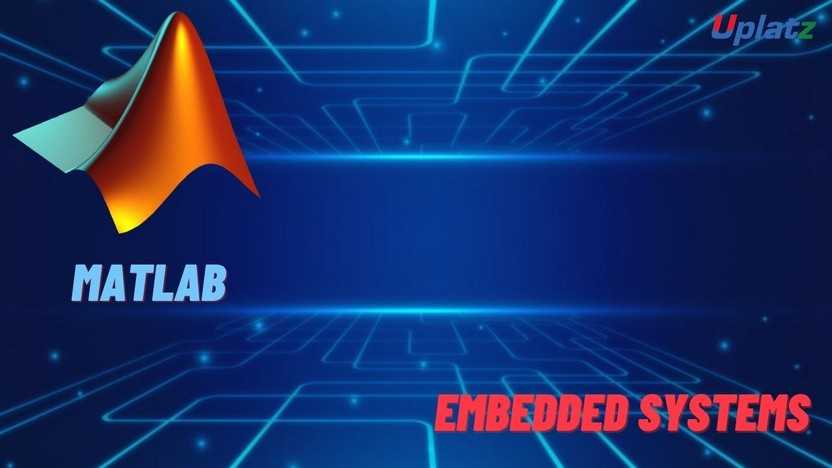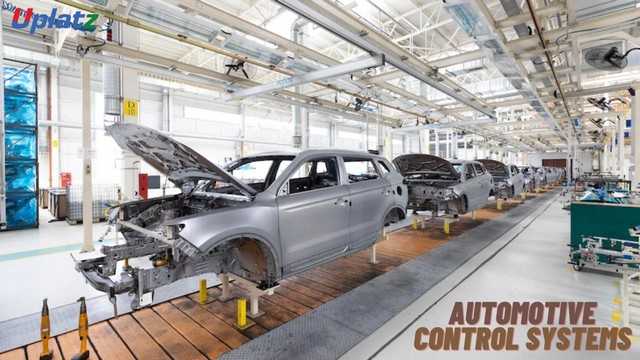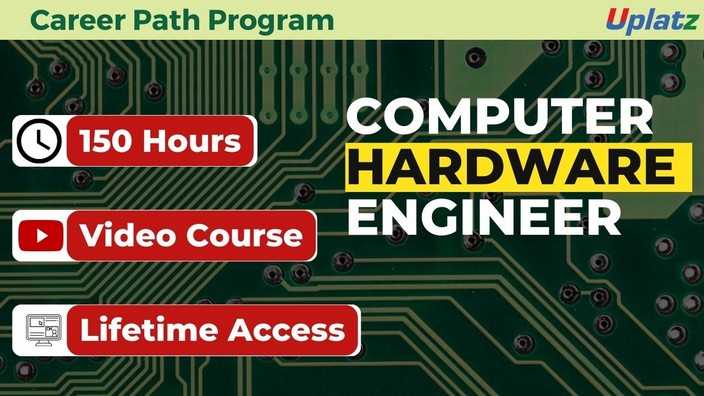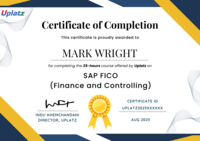Career Path - Automotive Engineer
Become Automotive Engineer with Automotive Embedded Systems & Applications, Automotive Electrics & Electronics, and Automotive Control Systems skillsPreview Career Path - Automotive Engineer course
Price Match Guarantee Full Lifetime Access Access on any Device Technical Support Secure Checkout Course Completion Certificate 95% Started a new career
BUY THIS COURSE (
95% Started a new career
BUY THIS COURSE (GBP 32 GBP 99 )-
 98% Got a pay increase and promotion
98% Got a pay increase and promotion
Students also bought -
-

- Embedded Systems and MATLAB Programming
- 30 Hours
- GBP 12
- 1501 Learners
-

- Automotive Control Systems
- 10 Hours
- GBP 12
- 63 Learners
-

- Career Path - Computer Hardware Engineer
- 150 Hours
- GBP 32
- 879 Learners

Career Path - Automotive Engineer consists of the following courses:
1).Automotive Embedded Systems & Applications
2).Automotive Electrics & Automotive Electronics
3).Automotive Control Systems
An automotive engineer is a professional who is responsible for designing, developing, and manufacturing vehicles and their various components. These engineers are typically involved in the entire process of designing and producing a vehicle, from the initial concept to the final product.
Some of the specific tasks that an automotive engineer may be responsible for include:
1).Designing and testing vehicle systems, such as engines, transmissions, and suspension systems
2).Conducting research and development to improve vehicle performance, safety, and fuel efficiency
3).Analyzing data to identify potential design improvements and cost savings
4).Creating and testing prototypes of new vehicle components
5).Collaborating with other engineers, designers, and production personnel to ensure that vehicles are manufactured efficiently and to the desired quality standards.
To become an automotive engineer, one typically needs a bachelor's degree in mechanical engineering or a related field, although some employers may require a master's degree or higher. Automotive engineers should also possess strong analytical, problem-solving, and communication skills, as well as an understanding of computer-aided design (CAD) and other relevant software tools.
Automotive engineering is a specialized branch of mechanical engineering that deals with the design, development, production, and testing of automobiles, including cars, trucks, buses, and motorcycles. It encompasses a wide range of disciplines, including mechanics, electronics, materials science, and computer science. Automotive engineers are responsible for designing and developing various systems and components of a vehicle, such as engines, transmissions, suspension systems, braking systems, fuel systems, and electrical systems. They also work on improving vehicle performance, fuel efficiency, and safety features, as well as reducing emissions.
Some of the key areas that automotive engineers focus on include aerodynamics, vehicle dynamics, engine technology, powertrain systems, and vehicle safety. They use a range of tools and techniques, such as computer-aided design (CAD) software, simulation tools, and physical testing, to ensure that the vehicles they design are reliable, efficient, and safe.
To become an automotive engineer, one typically needs a bachelor's degree in mechanical engineering or a related field, although some employers may require a master's degree or higher. Automotive engineers should also possess strong analytical, problem-solving, and communication skills, as well as an understanding of CAD and other relevant software tools. They must also stay up to date with the latest technological advancements and industry trends to remain competitive in the field.
Course/Topic 1 - Automotive Embedded Systems & Applications - all lectures
-
Lecture 1 - Automotive Safety Standards
-
Lecture 2 - Automotive Embedded Applications
-
Lecture 3 - Introduction to Automotive Systems
-
Lecture 4 - Vehicle Informatics Introduction
-
Lecture 5 - Serial Interfaces
-
Lecture 6 - CAN and LIN Bus Protocol
-
Lecture 7 - TTP FLEXRAY
-
Lecture 8 - Vehicle Control
-
Lecture 9 - Car Communication based on Bluetooth Link
-
Lecture 10 - Wireless Networking Technologies - part 1
-
Lecture 11 - Wireless Networking Technologies - part 2
-
Lecture 12 - Wireless Networking Technologies - part 3
-
Lecture 13 - Bluetooth Security
-
Lecture 14 - ZigBee 802.15.4
-
Lecture 15 - Bluetooth Low Energy
-
Lecture 16 - Context aware Wearable Devices
-
Lecture 17 - Components of Automotive Systems
-
Lecture 18 - Input Output Interfacing
-
Lecture 19 - Network Interface Cards
-
Lecture 20 - Internet Standardization
-
Lecture 21 - Jini Architecture
-
Lecture 22 - IEEE 1394
-
Lecture 23 - MOST Cooperation
-
Lecture 24 - Survey of MOST System Architecture
-
Lecture 25 - Survey of MOST Specifications
-
Lecture 26 - MOST Application Framework - part 1
-
Lecture 27 - MOST Application Framework - part 2
-
Lecture 28 - MOST Protocols - part 1
-
Lecture 29 - MOST Protocols - part 2
-
Lecture 30 - MOST Physical Layer - part 1
-
Lecture 31 - MOST Physical Layer - part 2
-
Lecture 32 - MOST Network and Fault Management
-
Lecture 33 - MOST Network Diagnostics
-
Lecture 34 - MOST Network Services
-
Lecture 35 - MOST Network Interface Controller - part 1
-
Lecture 36 - MOST Network Interface Controller - part 2
-
Lecture 37 - MOST Tools
-
Lecture 38 - MOST Compliance Tests
-
Lecture 39 - Testing MOST based Infotainment Systems
-
Lecture 40 - Introduction to MOST150 in Series
-
Lecture 41 - MOST150 Migration
-
Lecture 42 - Manufacturing and Processing of MOST Components
-
Lecture 43 - Accident and Injury Prevention - part 1
-
Lecture 44 - Accident and Injury Prevention - part 2
-
Lecture 45 - Accident and Injury Prevention - part 3
-
Lecture 46 - Inter Vehicle Communication
-
Lecture 47 - Connected Vehicles and Automated Vehicles
-
Lecture 48 - AUTOSAR - part 1
-
Lecture 49 - AUTOSAR - part 2
-
Lecture 50 - AUTOSAR - part 3
-
Lecture 51 - MICROSAR - part 1
-
Lecture 52 - MICROSAR - part 2
-
Lecture 53 - MICROSAR - part 3
-
Lecture 54 - MICROSAR - part 4
-
Lecture 55 - MICROSAR - part 5
-
Lecture 56 - MICROSAR - part 6
-
Lecture 57 - AUTOSAR Calibration - part 1
-
Lecture 58 - AUTOSAR Calibration - part 2
-
Lecture 59 - AUTOSAR Calibration - part 3
-
Lecture 60 - Winter Driving
-
Lecture 61 - Safe Vehicle Operation
Course/Topic 2 - Automotive Electrics and Automotive Electronics - all lectures
-
Chapter 1 - Electrical and Electronic Technology in Automobile
-
Chapter 2 - Electronic Diesel Control
-
Chapter 3 - Lighting Technology
-
Chapter 4 - Electronic Stability Program
-
Chapter 5 - Adaptive Cruise Control
-
Chapter 6 - Occupant Protection Systems
-
Chapter 7 - Basic Principles of Networking
-
Chapter 8 - Automotive Networking
-
Chapter 9 - Bus Systems
-
Chapter 10 - LIN Bus
-
Chapter 11 - MOST Bus
-
Chapter 12 - Bluetooth
-
Chapter 13 - FlexRay
-
Chapter 14 - Diagnosis Interfaces
-
Chapter 15 - Architecture of Electronic Systems
-
Chapter 16 - Mechatronics
-
Chapter 17 - Electronic Components in a Vehicle
-
Chapter 18 - Semiconductor Components
-
Chapter 19 - Manufacture of Semiconductor Components and Circuits
-
Chapter 20 - Control Units
-
Chapter 21 - Automotive Sensors
-
Chapter 22 - Sensor Measuring Principle - part 1
-
Chapter 23 - Sensor Measuring Principle - part 2
-
Chapter 24 - Sensor Measuring Principle - part 3
-
Chapter 25 - Sensor Measuring Principle - part 4
-
Chapter 26 - Sensor Measuring Principle - part 5
-
Chapter 27 - Gas Sensor and Concentration Sensors
-
Chapter 28 - Sensor Types 1
-
Chapter 29 - Sensor Types 2 - part 1
-
Chapter 30 - Sensor Types 2 - part 2
-
Chapter 31 - Actuators
-
Chapter 32 - Hybrid Drives
-
Chapter 33 - Vehicle Electrical Systems
-
Chapter 34 - Starter Batteries
-
Chapter 35 - Battery Design
-
Chapter 36 - Battery Maintenance
Course/Topic 3 - Automotive Control Systems - all lectures
-
Lecture 1 - Thermodynamic Engine Cycle - part 1
-
Lecture 2 - Thermodynamic Engine Cycle - part 2
-
Lecture 3 - Engine Management System
-
Lecture 4 - Diesel Engine Modelling
-
Lecture 5 - Engine Control Systems - part 1
-
Lecture 6 - Engine Control Systems - part 2
-
Lecture 7 - Diagnosis - part 1
-
Lecture 8 - Diagnosis - part 2
-
Lecture 9 - Driveline Control - part 1
-
Lecture 10 - Driveline Control - part 2
-
Lecture 11 - Driveline Control - part 3
-
Lecture 12 - Driveline Control - part 4
-
Lecture 13 - Driveline Control - part 5
The "Career Path: Automotive Engineer" course is designed to provide participants with comprehensive knowledge and skills in automotive engineering, focusing on three key areas: Automotive Embedded Systems & Applications, Automotive Electrics & Automotive Electronics, and Automotive Control Systems. The Key Objectives of this course are to Master Automotive Embedded Systems & Applications, Excel in Automotive Electrics & Automotive Electronics, Specialize in Automotive Control Systems and to Develop Skills in Automotive Prototyping and Testing. This course is ideal for aspiring automotive engineers, recent graduates entering the automotive industry, and professionals seeking to deepen their expertise in automotive embedded systems, electronics, and control systems
Automotive Embedded Systems & Applications:-
1).Introduction to embedded systems in automotive engineering
2).Microcontroller architectures and programming
3).Real-time operating systems (RTOS) for automotive applications
4).Embedded software development methodologies
5).Automotive communication protocols (CAN, LIN, FlexRay)
6).Automotive sensor technology and integration
Automotive Electrics & Automotive Electronics:-
1).Fundamentals of automotive electrical systems
2).Electrical components in vehicles (batteries, alternators, starters)
3).Automotive wiring diagrams and circuit analysis
4).Power distribution and management in vehicles
5).Electronic control units (ECUs) and their applications
6).Diagnostic techniques and troubleshooting in automotive electronics
Automotive Control Systems:-
1).Principles of control systems in automotive engineering
2).Sensors and actuators in automotive control systems
3).Engine management systems and fuel injection control
4).Transmission control systems (automatic and manual)
5).Chassis control systems (ABS, ESC, TCS)
6).Advanced driver assistance systems (ADAS) and autonomous vehicle control
This syllabus provides a comprehensive overview of the key topics typically included in a course designed to prepare students for a career as an Automotive Engineer. It covers both theoretical foundations and practical applications essential for working in the automotive industry.
Course Title: Career Path - Automotive Engineer
Course Overview:
This course is designed for individuals interested in pursuing a career in automotive engineering. It provides a comprehensive overview of the field, including the skills and knowledge required, potential career paths, and industry trends. Through a combination of lectures, hands-on projects, and guest speaker sessions, participants will gain valuable insights into the automotive sector and the various roles within it.
Module 1: Introduction to Automotive Engineering
The course begins with an introduction to automotive engineering, outlining its significance in the modern world. Participants will explore the history and evolution of automotive technologies, key industry players, and the impact of automotive engineering on society and the environment. This foundational knowledge sets the stage for understanding the various disciplines within the field.
Module 2: Educational Pathways and Required Skills
This module focuses on the educational requirements for becoming an automotive engineer. Participants will learn about relevant degrees, certifications, and technical skills essential for success in the field. Topics will include mechanical and electrical engineering principles, computer-aided design (CAD), and understanding automotive systems. Emphasis will be placed on the importance of both theoretical knowledge and practical experience.
Module 3: Key Specializations in Automotive Engineering
Automotive engineering encompasses various specializations. In this module, participants will explore areas such as powertrain engineering, vehicle dynamics, safety engineering, and electrical and electronics systems. Each specialization will be discussed in detail, highlighting the skills needed, typical job responsibilities, and the latest innovations within those fields.
Module 4: Industry Trends and Challenges
Understanding current industry trends is crucial for aspiring automotive engineers. This module examines topics such as electric and autonomous vehicles, sustainability practices, and the integration of advanced technologies like AI and IoT in automotive design and manufacturing. Participants will engage in discussions about the challenges faced by the industry, including regulatory changes and market dynamics.
Module 5: Practical Experience and Internships
Gaining practical experience is vital for career development in automotive engineering. This module covers the importance of internships, co-op programs, and hands-on projects. Participants will learn how to effectively seek out opportunities, build their resumes, and network within the industry. Guest speakers from automotive companies will share their experiences and advice on navigating the job market.
Module 6: Career Development and Professional Growth
In this module, participants will explore strategies for career advancement in automotive engineering. Topics will include personal branding, effective communication, and networking strategies. Additionally, participants will learn about professional organizations, conferences, and certifications that can enhance their careers and keep them updated on industry developments.
Module 7: The Future of Automotive Engineering
Looking ahead, this module delves into the future landscape of automotive engineering. Participants will explore emerging technologies, such as electric propulsion, connected vehicles, and smart manufacturing. Discussions will focus on how these trends are shaping job opportunities and the skills required for future automotive engineers.
Module 8: Capstone Project and Career Planning
To culminate their learning experience, participants will engage in a capstone project where they design a concept vehicle or system, applying the knowledge and skills acquired throughout the course. Additionally, they will create a personalized career plan, outlining their goals, potential job roles, and steps to achieve them, ensuring they are well-prepared to enter the automotive engineering field.
1.SAE Certified Automotive Engineer (SAE-AE)
Overview: Offered by the Society of Automotive Engineers (SAE), this certification is geared towards automotive engineers who wish to demonstrate their proficiency in automotive engineering principles and practices.
Benefits:
a).Professional Recognition: Validates your technical skills and knowledge in automotive engineering, providing industry-recognized credentials.
b).Career Advancement: Opens opportunities for advanced roles in automotive design, development, and testing.
c).Networking Opportunities: Provides access to a professional network of automotive engineers and industry resources.
2.Certified Automotive Technician (ASE)
Overview: Offered by the National Institute for Automotive Service Excellence (ASE), this certification is intended for automotive service technicians but is valuable for engineers involved in diagnostic and repair work.
Benefits:
a).Technical Expertise: Demonstrates proficiency in vehicle diagnostics, repair, and maintenance.
b).Career Flexibility: Useful for automotive engineers working on vehicle repair and service operations or collaborating with technicians.
c).Industry Credibility: Enhances your credibility and skills in the automotive service sector.
3.IATF 16949 Certification
Overview: This certification is for quality management systems in the automotive industry, focusing on manufacturing and supply chain processes.
Benefits:
a).Quality Management Skills: Validates your expertise in implementing and maintaining quality management systems in automotive manufacturing.
b).Industry Standard: Aligns with global automotive quality standards, improving your ability to work with OEMs and suppliers.
c).Career Opportunities: Opens roles in quality assurance, supply chain management, and manufacturing engineering.
4.Electric Vehicle (EV) Certification
Overview: Various certifications focus on electric vehicles, including those offered by organizations like the National Institute for Automotive Service Excellence (ASE) or specific EV training programs.
Benefits:
a).Specialized Knowledge: Provides expertise in electric vehicle technology, including battery systems, electric drivetrains, and charging infrastructure.
b).Industry Demand: Addresses the growing demand for engineers skilled in EV technology and sustainable transportation.
c).Career Growth: Opens opportunities in EV development, manufacturing, and maintenance.
5.Automotive Cybersecurity Certification
Overview: Certifications in automotive cybersecurity focus on protecting vehicle systems from cyber threats and ensuring data security.
Benefits:
a).Cybersecurity Expertise: Validates your ability to secure automotive systems against hacking and cyberattacks.
b).Emerging Field: Addresses the increasing need for cybersecurity in connected and autonomous vehicles.
c).Career Prospects: Opens roles in cybersecurity, systems engine6. Automotive Engineer – Advanced Driver Assistance Systems (ADAS)
d).Overview: This certification focuses on advanced driver assistance systems, including technologies like adaptive cruise control, lane-keeping assistance, and automatic emergency braking.
6.Project Management Professional (PMP)
Overview: While not specific to automotive engineering, PMP certification is valuable for managing automotive projects, including vehicle development and manufacturing projects.
Benefits:
a).Project Management Skills: Validates your ability to manage complex automotive projects, including planning, execution, and risk management.
b).Career Enhancement: Opens roles in project management within automotive engineering and manufacturing.
c).Global Recognition: Provides a globally recognized credential in project management practices.
7.Automotive HVAC Certification
Overview: This certification focuses on the heating, ventilation, and air conditioning (HVAC) systems within vehicles.
Benefits:
a).HVAC Expertise: Provides specialized knowledge in designing, diagnosing, and repairing automotive HVAC systems.
b).Industry Application: Enhances your ability to work on climate control systems in vehicles, which is increasingly important in modern automotive design.
c).Career Roles: Opens opportunities in HVAC system development, testing, and repair within the automotive industry.
By obtaining these certifications, you can demonstrate your expertise and commitment to the field of automotive engineering, positioning yourself for a successful and advanced career in this dynamic industry.
Career and Jobs- After completing a career path focused on Automotive Engineering with a syllabus covering Automotive Embedded Systems & Applications, Automotive Electrics & Automotive Electronics, and Automotive Control Systems, individuals can pursue various specialized roles in the automotive industry. Here are some typical job roles and potential salary ranges:
a).Automotive Embedded Systems Engineer-Salaries for automotive embedded systems engineers typically range from $70,000 to $130,000 per year, depending on experience, location, and the complexity of projects.
b).Automotive Electronics Engineer - Salaries for automotive electronics engineers range from approximately $65,000 to $120,000 annually.
c).Automotive Control Systems Engineer- Salaries for automotive control systems engineers can range from $70,000 to $140,000 per year.
d).Automotive Systems Integration Engineer-Salaries for automotive systems integration engineers typically range from $70,000 to $130,000 annually.
e).Research and Development (R&D) Engineer – Automotive-Salaries for automotive R&D engineers can vary widely based on the scope of research and innovation. Generally, salaries range from $70,000 to $150,000 per year.
f).Automotive Design Engineer (Electrical/Electronics)-Salaries for automotive design engineers specializing in electrical or electronics typically range from $65,000 to $120,000 annually.
g).Technical Consultant - Automotive Engineering- Salaries for technical consultants in automotive engineering can range from $70,000 to $150,000 per year.
h).Project Manager - Automotive Engineering-Salaries for automotive project managers typically range from $80,000 to $150,000 annually.
These salary ranges are approximate and can vary based on factors such as geographic location, industry sector (OEMs, suppliers, technology firms), educational background, certifications, and years of relevant experience. Advanced degrees, specialized certifications (such as in automotive engineering or systems integration), and continuous professional development can enhance career prospects and earning potential in the automotive engineering field.
Q1.What is an automotive embedded system, and why is it crucial in modern vehicles?
Answer: An automotive embedded system is a specialized computer system embedded in vehicles to perform specific functions related to vehicle control, diagnostics, and user interfaces. They are crucial because they:
a).Enhance Vehicle Functionality: Control various functions like engine management, transmission, and infotainment systems.
b).Improve Safety: Manage critical safety systems such as airbags, ABS, and stability control.
c).Increase Efficiency: Optimize performance and fuel efficiency through precise control and monitoring.
Q2.Describe a typical architecture of an automotive embedded system.
Answer: A typical automotive embedded system architecture includes:
a).Microcontroller/Processor: The central unit executing the embedded software and controlling various functions.
b).Input/Output Interfaces: Components like sensors (e.g., temperature, pressure) and actuators (e.g., fuel injectors, motors) for real-time data acquisition and control.
c).Communication Interfaces: Protocols like CAN (Controller Area Network), LIN (Local Interconnect Network), and FlexRay for inter-device communication.
d).Memory: Includes ROM for firmware storage and RAM for temporary data handling.
Q3.What are some common communication protocols used in automotive embedded systems?
Answer: Common communication protocols include:
a).CAN (Controller Area Network): Widely used for communication between microcontrollers and devices without a host computer.
b).LIN (Local Interconnect Network): Used for lower-speed, lower-cost communication in simple applications.
c).FlexRay: Provides high-speed communication for safety-critical and high-performance applications.
d).MOST (Media Oriented Systems Transport): Designed for multimedia applications and infotainment systems.
Q4.How do you ensure the reliability and safety of automotive embedded systems?
Answer: Ensuring reliability and safety involves:
a).Redundancy: Implementing redundant systems and fail-safes to handle failures.
b).Testing: Conducting rigorous testing, including unit tests, integration tests, and stress tests.
c).Compliance: Adhering to automotive standards and regulations such as ISO 26262 for functional safety.
d).Error Handling: Designing robust error detection and handling mechanisms.
Q5.What are the key differences between automotive electrics and automotive electronics?
Answer: Main Difference include
a).Automotive Electrics: Refers to the electrical systems in vehicles, including wiring, battery, lighting, and power distribution.
b).Automotive Electronics: Involves electronic control units (ECUs), sensors, and actuators that manage complex functions like engine control, infotainment, and advanced driver assistance systems (ADAS).
Q6.What are some common electrical issues in automotive systems, and how can they be diagnosed?
Answer: Common electrical issues include:
a).Battery Problems: Insufficient charge or faulty connections. Diagnosed using a multimeter to check voltage and connections.
b).Wiring Faults: Broken or short-circuited wires. Diagnosed by visually inspecting wiring and using continuity testers.
c).Fuse Failures: Blown fuses causing loss of function. Diagnosed by checking fuse continuity and replacing as needed.
d).Sensor Failures: Malfunctioning sensors affecting system performance. Diagnosed by checking sensor outputs and connections.
Q7.What are automotive control systems, and what are their main functions?
Answer: Automotive control systems are systems that manage and control various aspects of vehicle performance. Main functions include:
a).Engine Control: Regulates fuel injection, air intake, and ignition timing to optimize engine performance and emissions.
b).Transmission Control: Manages gear shifts and transmission modes to improve driving experience and fuel efficiency.
c).Brake Control: Includes systems like ABS and Electronic Stability Control (ESC) to enhance safety and control.
d).Suspension Control: Adjusts suspension settings for ride comfort and handling.
Q8.How do Advanced Driver Assistance Systems (ADAS) leverage automotive control systems?
Answer: ADAS uses automotive control systems to provide features that enhance driving safety and convenience. Examples include:
a).Adaptive Cruise Control: Uses radar and cameras to maintain a safe distance from the vehicle ahead.
b).Lane Departure Warning: Monitors lane position and alerts the driver if the vehicle drifts out of its lane.
c).Automatic Emergency Braking: Detects imminent collisions and applies brakes to prevent or mitigate accidents.
d).Parking Assist: Uses sensors to help the driver park by providing guidance and automatic steering.
Q9.Explain the concept of control loops in automotive control systems.
Answer:Control loops in automotive control systems involve a process where:
a).Sensors: Measure the current state or performance of a system (e.g., engine temperature, speed).
b).Controller: Compares the measured state to a desired setpoint and calculates the necessary adjustment.
c).Actuators: Implement the adjustments (e.g., adjusting fuel injection, throttle position).
d).Feedback: The system continuously monitors and adjusts based on feedback to maintain desired performance.
Q10.What are some challenges in developing automotive control systems, and how can they be addressed?
Answer: Challenges include:
a).Complexity: Managing the interaction between multiple control systems. Addressed by modular design and thorough integration testing.
b).Real-Time Requirements: Ensuring timely responses to inputs and conditions. Addressed by optimizing algorithms and using real-time operating systems.
c).Safety and Reliability: Ensuring systems function correctly under all conditions. Addressed by following safety standards (e.g., ISO 26262) and conducting rigorous validation and verification.









